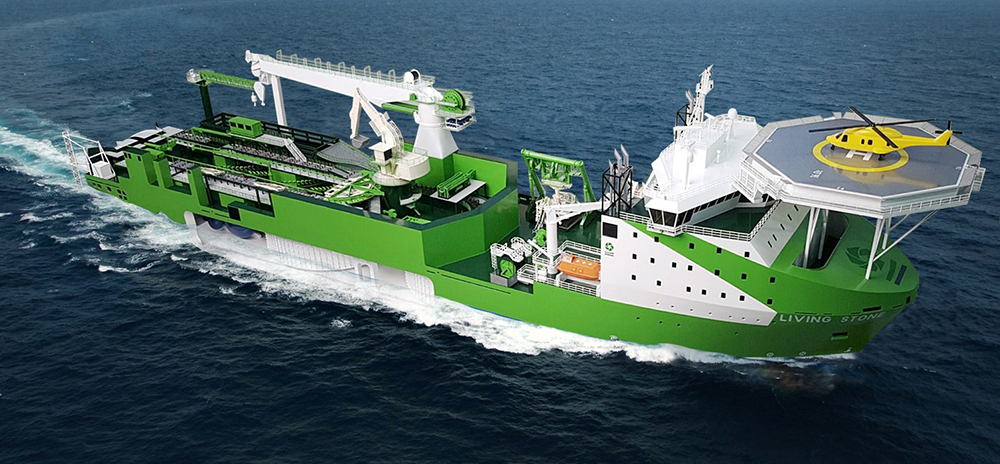Cable laying vessels play a vital role in connecting the globe through undersea communication cables. These specialized ships lay the foundation for global internet connectivity by deploying cable networks across oceans. With growing data consumption and digitalization, cable laying vessels are working round the clock to expand international bandwidth capacity. Let’s take a detailed look at these technologically advanced ships and their role in the digital economy.
What is a Cable Laying Vessel?
A cable laying vessel is a specialized type of ship designed and equipped to lay telephone cables or power cables on the seabed. Some key characteristics that distinguish cable ships from regular vessels include:
– Hull Design: Cable laying vessels have reinforced hulls with strengthened bows to cut through rough seas and protect against anchors or debris on the seafloor. Their sterns feature large cable tanks and deployment systems.
– Propulsion System: Most modern cable ships are diesel-electric powered for efficiency. Their propulsion systems can provide thrust both ahead and astern for accurate cable laying operations.
– Cable Carrying Capacity: State-of-the-art cable ships can carry over 5,000 kilometers of fiber optic cables in their onboard cable tanks. The largest cable can load over 8,000km of cables.
– Positioning Technology: Advanced dynamic positioning systems allow cable ships to maintain precise position even in rough waters, critical for accurate cable laying. Devices like USBL also help locate cables on the seafloor.
– Deployment Equipment: Onboard systems include cable engines, turntables, sheaves, capstans and plows/trenchers to deploy cables off turbines, lower them onto the seabed and bury them for protection.
– Additional Features: Multi-beam echosounders, ROVs and other survey equipment help map and inspect cable routes prior to and after deployment.
Cable Laying Process
The main steps involved in cable laying operations using specialized vessels are:
– Route Planning: Cable routes are carefully planned taking into account technical, economic, regulatory and environmental factors. Seabed surveys help identify safe paths.
– Cable Loading: The manufactured cable is loaded onboard the cable ship in its tanks/carousels in precise sequence and configuration depending on the planned route.
– Deployment: Using dynamic positioning, the cable is guided off the cable engines and deployed onto the seabed at controlled speeds usually 1-2 knots.
– Burial (Optional): Plows or remotely operated trenchers can bury sections of the cable underwater for protection against anchors.
– Splicing: At planned connections, new cable segments are spliced to the installed length using sophisticated onboard fusion splicers.
– Completion: Onshore landing stations are connected, the cable is tested, buried if required, and GPS positions are logged before completion.
Major Cable Laying Projects
Some landmark transoceanic cable projects effectively connecting continents include:
– Atlantic Crossing (1856): The first successful telegraph cable laid across the Atlantic Ocean between UK and USA.
– FLAG (1988): The first fiber optic cable spanning three oceans Asia, Middle East and Europe carrying 2.5Gbps capacity.
– TAT-14 (2001): Spanning Europe, Middle East, India, Malaysia carrying up to 160Gbps. Helped spur internet boom.
– SEA-ME-WE 3 (2001): Connected Southeast Asia, Middle East and Western Europe with initial 80Gbps capacity.
– Pan-American (1959): The first transpacific submarine communications cable linking USA to Latin America and Asia.
– MAC (1983): First transpacific cable system carrying 10Gbps of data between USA and Asia across the Pacific.
– 2Africa (2021): Largest submarine cable project connecting Europe and Asia through Africa with capacity up to 180 Terabits per second.
Modern Cable Laying Vessel Fleet
Some key companies operating sophisticated cable ships for global connectivity projects include:
– NKT Victoria: Owned by NKT, can carry 9,000km of cable on 11.5km carousels. Used for projects like HK-G and 2Africa.
– Audacia: Belonging to global marine engineering firm Boskalis, can load 8,000km of cable at 18 knots deployment speed.
– Cable Enterprise: Owned by TE SubCom boasting dynamic system and carousels for 9,000km cable, deployed cables such as Marea and Havfrue.
– Ile de Brehat: Owned by Naples-based Cable & Marine, equipped for long distance routes, deployed C-Lite cable in Arabian Sea.
– Leon Thevenin: Operating under Alcatel Submarine Networks, used for complex routes such as Hawaiki across South Pacific.
– CS Severni Vetrov 1: Russian state-owned cable ship deployed communications infrastructure projects across Russian territories.
As data demand rises exponentially, cable ships are being upgraded with advanced capabilities. Dual-lay spreaders, robotics, larger carousels and environmental credentials are becoming standard as the global internet backbone expands underwater. Cable laying vessels will remain critical infrastructure for connecting economies and societies worldwide long into the future.


